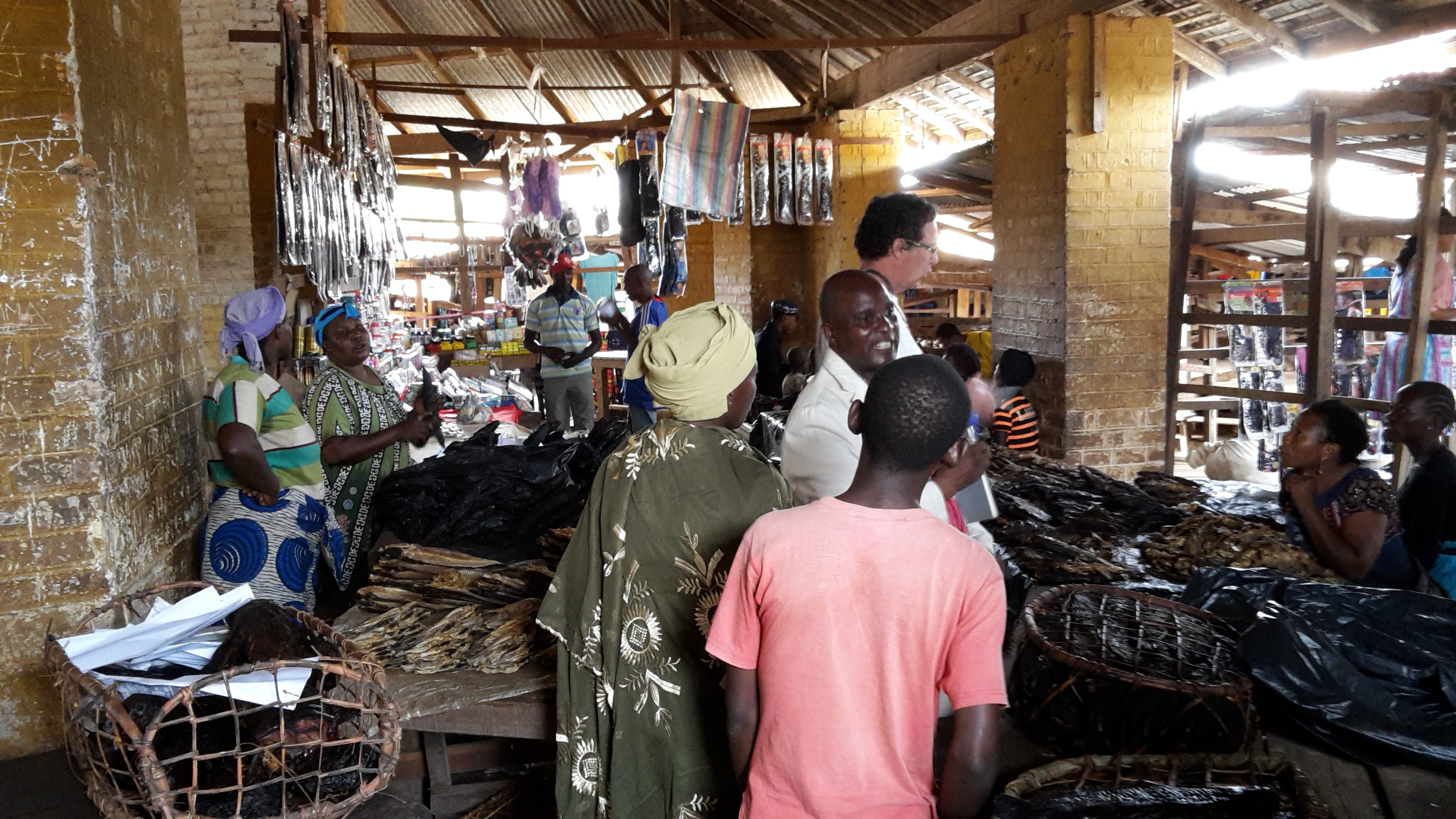Developing the Republic of Congo's inland fishery and aquaculture industry

People in the Republic of Congo eat an estimated 26.5 kg of fish a year, far exceeding the global annual average of nearly 20 kg per person. Such strong demand makes investment in the country's inland fishery and aquaculture sector very attractive.
FAO, along with the International Fund for Agricultural Development (IFAD), is supporting the Government of the Republic of Congo to develop the sector, identifying priority investment areas for enhancing production, improving inland fishery value chains and professionalizing commercial fish farming.
Challenges
The country's fishing sector − almost exclusively small-scale producers − faces several challenges. Fish producers are poorly organized and lack access to rural finance, resulting in underutilized national fishing resources.
Without good roads to markets or reliable cold chain facilities, fish producers end up smoking most of their catch. This reduces the nutritional and monetary value, and exposes women − often the ones who process the fish − and children nearby to smoke-related respiratory hazards.
"They smoke the fish because they have no other way of preserving it", said Simon Rietbergen, Senior Investment Officer in FAO’s Investment Centre. "But they could make a lot more money with the same catch if they had good cold chain facilities".
Also, about half of the fish eaten in the country is imported and frozen, but poor storage and transportation conditions create significant health risks, especially if the fish is defrosted and refrozen.
Government commitment
The government is committed to promoting the sustainable growth of the subsector by focusing on a number of public policies, expenditure and strategies.
The most important is the 2011 strategic plan for aquaculture and fisheries development, which aims to strengthen public institutions, policies and capacities to promote responsible and sustainable fisheries management and improve the efficiency of aquaculture production. The government is also working to raise the level of professionalism among its fish producers.
Its plan is in line with FAO’s Voluntary Guidelines for Securing Sustainable Small-Scale Fisheries in the Context of Food Security and Poverty Eradication.
"The Minister of Fisheries and Aquaculture has a very clear vision about what can be done to develop the sector, from linking small-scale fish producers with markets to investing in infrastructure to help fishers land and sell their fish", said Felix Marttin, Fishery Resource Officer in FAO's Fisheries and Aquaculture Department.
Adding to the country's efforts
A USD 7.7 million IFAD loan is helping to finance a six-year inland fisheries and aquaculture project to improve the livelihoods and food security of small-scale fishers and fish farmers in the country's north. As of 2018, an additional USD 8 million will be available through the Investment Fund of the Oil Producing and Exporting Countries.
At IFAD's request, FAO, through its Investment Centre and Fisheries and Aquaculture Department, fielded several missions to assist the Ministry and IFAD in identifying areas where investment would stimulate the sustainable production of affordable fisheries and aquaculture outputs, and raise the incomes of people working in the sector.
"Linking to the private sector is important, whether buying inputs or selling produce, and the success of that depends on how the fishers and fish farmers organize themselves", said Rietbergen. "This IFAD project is dealing with organizational capacity head-on”.
For this project, FAO was selected to provide technical assistance to support fishing communities to enhance inland fisheries production and reduce post-harvest losses, while ensuring the availability of fresh fish in the market.
The technical assistance will entail, among other things, conducting an inland capture fisheries socio-economic survey and monitoring the adverse effects of fishing methods and gear on the environment. It will include training on the proper use of smoking ovens and development of fisheries management plans following the Ecosystem Approach to Fisheries. And it will involve supporting tilapia and catfish farming, and improved fish feed production, feeding techniques, pond construction and fish processing.
There is good potential, said Rietbergen, to work with other sectors − whether by linking fishing communities to large sawmilling towns where they can sell their fresh fish closer to where it is caught, or working with crop farmers to produce ingredients for good quality, inexpensive fish feed using locally grown maize, soy and palm oil.
Additional support through a Technical Cooperation Programme project will enable FAO to engage in the participatory mapping of sensitive zones and habitats, and identify sensitive periods, for commercially important fish species.
Contacts:
- Simon Rietbergen, Senior Forestry Officer, TCIA: [email protected]
- Felix Marttin, Fishery Resource Officer, FIAF: [email protected]
